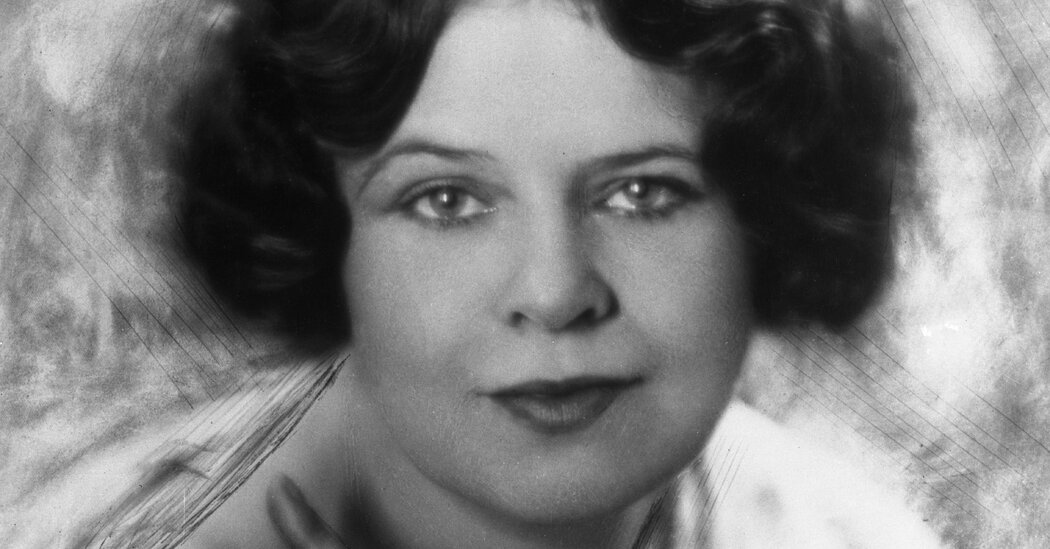THE BISHOP AND THE BUTTERFLY: Murder, Politics, and the End of the Jazz Age, by Michael Wolraich
In 1923, Vivian Gordon, a stage mother in her early 30s, was arrested and convicted in New York City for “vagrancy” — part of a vast entrapment scheme that had ruined the lives of hundreds of women and enriched scores of cops, lawyers and court officials. It was a conveniently vague charge, a legal catchall that included alcoholism and prostitution. In Gordon’s case, she alleged, her ex-husband, who sought sole custody of their daughter, had persuaded a corrupt police officer to frame her.
Unable to afford the requisite bribes, Gordon — real name Benita Franklin Bischoff — spent much of the next two and a half years in the New York State Reformatory for Women under appalling circumstances.
In 1931, Gordon threatened to turn whistle-blower. (She had information “in connection with a ‘frame-up’ by a police officer,” she had written to investigators.) Soon after, her body was found in Van Cortlandt Park: She had been strangled with a rope.
As recounted by the journalist and biographer Michael Wolraich, the murder of this “Broadway butterfly,” as she was known in the press, did not just provide salacious copy. It also launched a wave of investigations that exposed virulent corruption all the way to the top of the city’s and state’s leadership, and in the process dealt a death blow to Tammany Hall, which had maintained a viselike grip on New York politics for a century.
Wolraich’s account of the murder and the ensuing investigations, helmed by the former judge Samuel Seabury (the famously upright “bishop” in the book’s title, he was descended from generations of clergy), is brick-dense yet propulsive. Unlike the sensationalist reporters of the era, Wolraich manages to handle even the seediest of underworlds with reportorial spareness and elegance, treating his material more as a nonfiction political thriller than a true-crime whodunit. (Wolraich is well versed in the period; his previous subjects include Theodore Roosevelt.)
Wolraich argues that the successes of the Seabury investigations owed as much to timing as they did to its principled leader. The inquest might have been scorned during the devil-may-care 1920s, but by 1931, the mood in the city had darkened considerably, as New Yorkers — angry about escalating crime and spiraling poverty — demanded accountability of their leaders.
Many were crying out for “a savior,” Wolraich writes, and Seabury’s “righteous dignity” inspired “trust in the depths of the Depression.” Different times call for different heroes: The city’s once-beloved, freewheeling mayor, Jimmy Walker, would be one of Seabury’s most prominent casualties.
The book also provides a fascinating portrait of Franklin Delano Roosevelt, then New York’s governor, as he navigated the fallout from Gordon’s murder and the public’s demands to clean up the state’s snakes’ nests. “The longer her killer remained free, the greater the threat to his presidential ambitions,” writes Wolraich. An equal threat: getting steamrolled by furious Tammany bosses, whose continued support Roosevelt needed, even as his investigator was attacking their political machine.
In this respect, the account serves as a disquieting reminder of how tragedy can be used to effect change, but also how it is often leveraged for advancement. Although the case was initially a political headache for Roosevelt, he was ultimately able to use it to his advantage.
Equally unnerving is the book’s reminder of how infrequently and unevenly justice is meted out. While Wolraich justifiably marvels that Gordon’s murder led to the collapse of Tammany, this posthumous triumph was qualified by the fact that Gordon’s actual killers were exonerated by a jury.
Countless women had seen their lives ruined by a nefarious system that had operated with impunity for years. The Gordon murder and Seabury hearings might have long since faded from public memory, but their prism into corruption and ruthless opportunism remains ever relevant.
THE BISHOP AND THE BUTTERFLY: Murder, Politics and the End of the Jazz Age | By Michael Wolraich | Union Square | 336 pp. | $28.99


